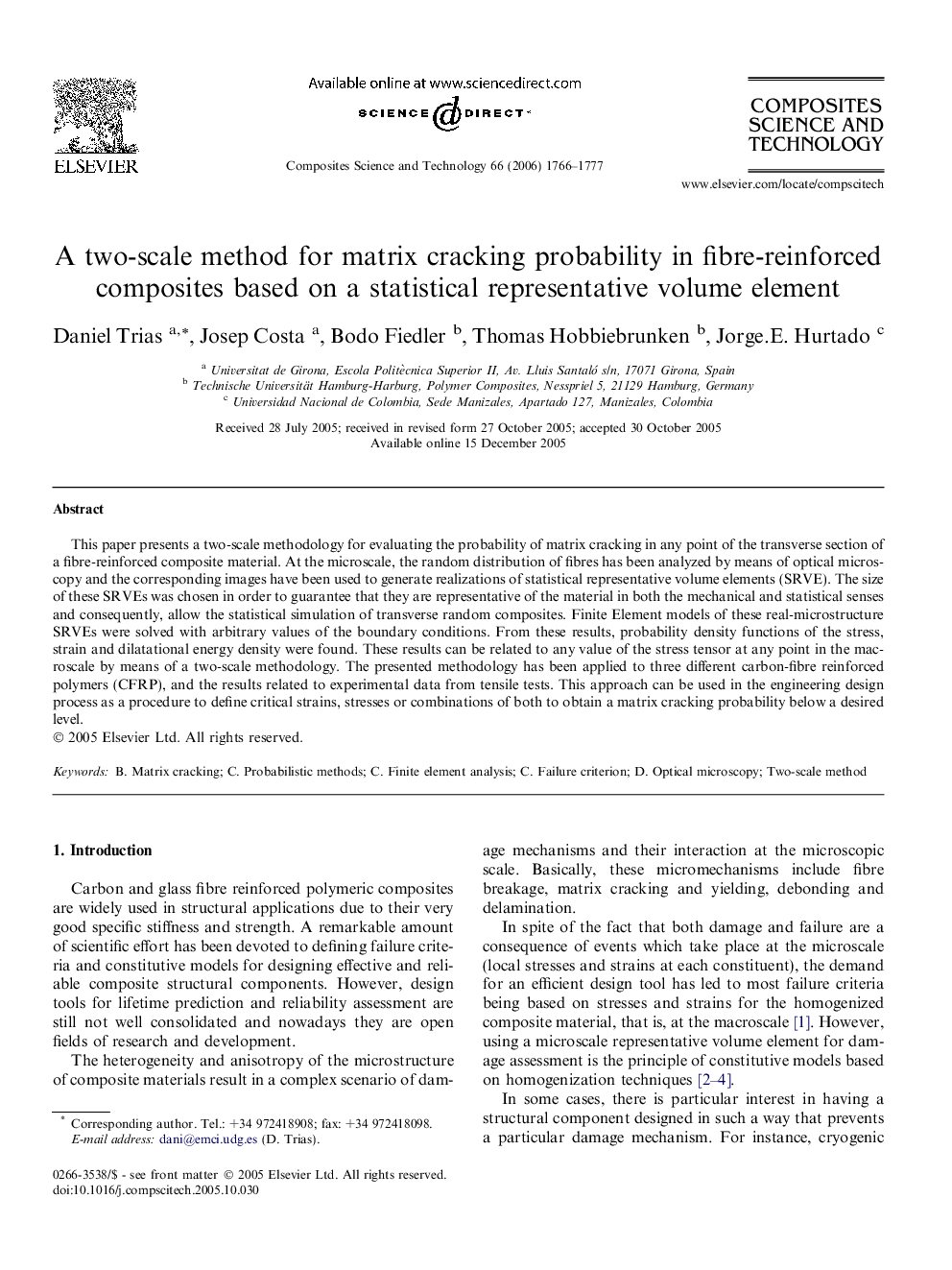| Article ID | Journal | Published Year | Pages | File Type |
|---|---|---|---|---|
| 822271 | Composites Science and Technology | 2006 | 12 Pages |
This paper presents a two-scale methodology for evaluating the probability of matrix cracking in any point of the transverse section of a fibre-reinforced composite material. At the microscale, the random distribution of fibres has been analyzed by means of optical microscopy and the corresponding images have been used to generate realizations of statistical representative volume elements (SRVE). The size of these SRVEs was chosen in order to guarantee that they are representative of the material in both the mechanical and statistical senses and consequently, allow the statistical simulation of transverse random composites. Finite Element models of these real-microstructure SRVEs were solved with arbitrary values of the boundary conditions. From these results, probability density functions of the stress, strain and dilatational energy density were found. These results can be related to any value of the stress tensor at any point in the macroscale by means of a two-scale methodology. The presented methodology has been applied to three different carbon-fibre reinforced polymers (CFRP), and the results related to experimental data from tensile tests. This approach can be used in the engineering design process as a procedure to define critical strains, stresses or combinations of both to obtain a matrix cracking probability below a desired level.
